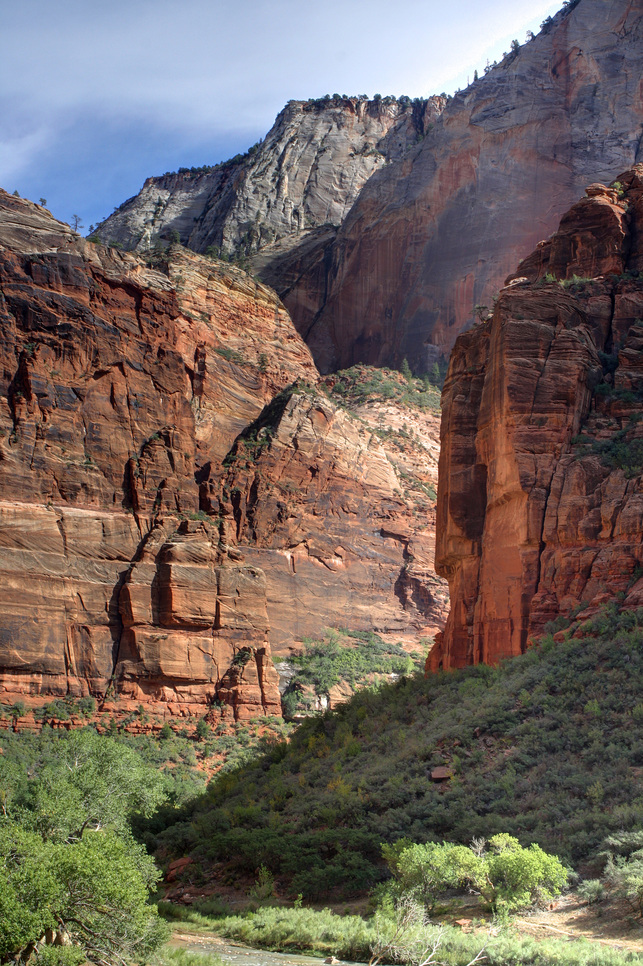The rocks in Zion National Park span an impressive geological timeline, with ages ranging from approximately 270 million to 120 million years old. This diverse collection of sedimentary formations represents a complex history of deposition, lithification, and erosion. The park’s iconic landscapes, including towering cliffs and deep canyons, are the result of these ancient rock layers being uplifted and carved by natural forces over millions of years.
What Is the Geological Timeline of Zion’s Rock Formations?

The rock layers in Zion National Park tell a story that spans over 250 million years of Earth’s history. Here’s a breakdown of the major formations and their ages:
- Kaibab Formation: ~270 million years old (Permian)
- Moenkopi Formation: 240-250 million years old (Early Triassic)
- Chinle Formation: 210-225 million years old (Late Triassic)
- Moenave Formation: 195-210 million years old (Early Jurassic)
- Kayenta Formation: 185-195 million years old (Early Jurassic)
- Navajo Sandstone: 180-185 million years old (Middle to Late Jurassic)
- Temple Cap Formation: 170-175 million years old (Middle Jurassic)
- Carmel Formation: 165-170 million years old (Late Jurassic)
- Cedar Mountain Formation: ~120 million years old (Early Cretaceous)
This sequence of rock layers represents a diverse range of ancient environments, from shallow seas to vast deserts, each contributing to the unique geology of Zion National Park.
How Were These Rock Ages Determined?

Scientists use several methods to determine the age of rocks in Zion National Park:
- Stratigraphy: By studying the order of rock layers, geologists can establish a relative age sequence.
- Fossil Analysis: Fossils found within the rock layers provide crucial age indicators.
- Geologic Time Scale Correlation: Rock layers are matched with established geological time scales.
- Radiometric Dating: While less common for sedimentary rocks, this method can be used on associated igneous rocks or minerals.
What Are the Oldest and Youngest Rocks in Zion?
- Oldest: The Kaibab Formation, approximately 270 million years old from the Permian period.
- Youngest: The Cedar Mountain Formation, about 120 million years old from the Early Cretaceous period.
How Thick Are the Rock Layers in Zion?
The sedimentary strata in Zion National Park are impressively thick:
- Total thickness: Over 7,000 feet
- Navajo Sandstone (most prominent formation): Approximately 2,200 feet thick in the Zion Canyon area
What Major Geological Events Shaped Zion’s Landscape?
- Sedimentation: Over 250 million years of sediment accumulation in various environments.
- Lithification: Compaction and cementation of sediments into rock.
- Uplift: Colorado Plateau uplift, raising formations up to 10,000 feet above sea level.
- Erosion: Ongoing process carving deep canyons, including 1,300 feet of sediment erosion by the Virgin River in the last million years.
How Do Different Rock Layers Contribute to Zion’s Scenery?
Each rock layer in Zion National Park contributes uniquely to its stunning landscapes:
| Formation | Age (Million Years) | Contribution to Scenery |
|---|---|---|
| Navajo Sandstone | 180-185 | Forms towering cliffs and iconic features like Angels Landing |
| Kayenta Formation | 185-195 | Creates step-like layers in canyon walls |
| Moenave Formation | 195-210 | Adds reddish layers to lower canyon walls |
| Chinle Formation | 210-225 | Forms colorful slopes and badlands |
| Moenkopi Formation | 240-250 | Creates chocolate-brown ledges and slopes |
What Can Fossils Tell Us About the Age of Zion’s Rocks?
Fossils found in Zion’s rock layers provide valuable information about their age:
- Triassic Period Fossils (Chinle Formation):
- Plant fossils
- Early dinosaur tracks
-
Phytosaur remains
-
Jurassic Period Fossils (Moenave and Kayenta Formations):
- Dinosaur tracks
- Fish scales
- Plant impressions
These fossils help scientists correlate the rock layers with specific time periods, refining our understanding of their ages.
How Has the Age of Zion’s Rocks Influenced Its Erosion Patterns?
The varying ages and compositions of Zion’s rock layers have led to differential erosion:
- Harder, younger layers like Navajo Sandstone form resistant cliff faces.
- Softer, older layers like the Chinle Formation erode more quickly, creating slopes and valleys.
- This differential erosion has resulted in Zion’s distinctive step-like topography and deep, narrow canyons.
The Virgin River’s erosive power has been particularly influential, carving through approximately 1,300 feet of rock in just the last million years – a blink of an eye in geological terms.
References:
1. Exploring Zion National Park’s Unique Geology | Under Canvas®
2. Zion National Park Geology
3. The Geology of Zion National Park – UtahGeology
